This is a relaxed, summer-Friday kind of post, and if you wander through it, it just might connect to books and bookselling somewhere down the page.
Back in the late 1950s, my dad and his friend, Tim Sharpe, decided to see if they could start a fad. They both worked on the college paper, so finding a word or phrase to foist upon the Indiana University population seemed a natural choice. Somehow, they lit on the phrase, "The thing is…" as their devilish weapon, and set out to see if they could get it to catch on. They used "the thing is" in articles, interviews, at parties, and so on, and sure enough, it began cropping up all over the place, seeping into the collegiate lexicon. I find this inspiring, if not exactly inspired.
Over the years, I’ve collected my own set of things I would like to change on a wide-scale basis, and now that there’s this opportunity, this forum, this platform for devious idea propagation (I’m talking about Shelftalker here), it is time to crack my knuckles, rub my hands together gleefully, cackle a bit, and begin the mitosis.
 There’s a mini-revolution I have wanted to start for quite some time, because I think it’s an excellent idea and might cut down on road rage, specifically mine. I’m talking about changing our habit of flashing brights at other drivers. Nothing is more instantly infuriating than someone flashing his brights at you at night, especially when you don’t have yours on, or you’re right behind a car that does. The initial flash is usually quick and well-intentioned. But then, if you don’t respond immediately, there’s a second brights-attack: overlong, self-righteous, vindictive, dangerous. Brights wars are blinding, and create instant anonymous enemies.
There’s a mini-revolution I have wanted to start for quite some time, because I think it’s an excellent idea and might cut down on road rage, specifically mine. I’m talking about changing our habit of flashing brights at other drivers. Nothing is more instantly infuriating than someone flashing his brights at you at night, especially when you don’t have yours on, or you’re right behind a car that does. The initial flash is usually quick and well-intentioned. But then, if you don’t respond immediately, there’s a second brights-attack: overlong, self-righteous, vindictive, dangerous. Brights wars are blinding, and create instant anonymous enemies.
So try something different, something small and easy and, I humbly submit, brilliantly diplomatic. Instead of flashing my brights, I just flick my headlights off and on. It’s just as fast and gets the message across without arising ire. How cool is that? I know that signal is also used to indicate a police trap ahead, but drivers are smart and can figure out what you’re signaling through context, much the way readers confer meaning to unfamiliar words. (Ha! Like how I did that? Connected driving to reading? Cha.)
Okay, it’s not exactly inventing the concept of micro-loans or inventing easier ways of distributing water to thirsty villages (Play Pumps, rolling barrels, etc.), but hey, it could keep someone from driving off the road blinded, or pulling a pistol out of the glove compartment, or, or… becoming vexed, I will be one happy guerilla. So, DOWN WITH BRIGHTS! UP WITH OFF! I doubt I’ll sway the drivers who enjoy these little nighttime duelling matches, but if I can at least get the mild-mannered people of my town to (not) see the light, I’ll be delighted. If you feel as I do, spread the gesture! See what happens.
My second small-revolution idea comes from an eco-conscious customer, who mentioned a cooking show host adjuring people to cut their pasta water quantity in half. Yep, that’s it. You need about half the amount of water for your pasta and potatoes that recipes call for. There’s an easy way to conserve water that I never would have thought of, and am happy to pass along. Someone Twitter it, would you? Think how much water could be saved even if word got out only in Manhattan. I lived there for years; I know how much pasta you NY people eat. Many social movements use rhyming slogans to get the message across; everyone learned "Loose lips sink ships" in history class. So here’s my (tongue in cheek) offering: PASTA (NOT RICE): HALF THE WATER IS NICE! See? Pass it along. It’s stupid, but you might well remember it next time you pull out the penne.
Thirdly, I recently got my dander up about the phrase, "Man up." It’s a great phrase, fun to say, punchy, economical—a happy coinage all the way around. But it also happens to leave out the half of the population that does truly, wildly "man up" kinds of things like, oh, say, pushing live baby people of out a canal the size of a nickel on a regular basis. I’m already straining the sensibilities of this distinguished publication with that last sentence, I’m sure, so I can’t in fact share my solution to the "Man up" problem, at least overtly. "Woman up" doesn’t cut it, by the way. It just sounds lame, and like it’s trying too hard. That extra syllable drains all the punch out of the thing. "Girl up?" I picture a kid in braids. "Chick up?" I don’t think so. Sounds like you’re about to grab stilettos and a purse. Why are so many of the synonyms for women diminishing? Hmm, "Gal up?" Maybe if you’re on a horse.
 At the risk of offending the faint-of-heart and damaging my professional reputation, I will merely hint that my one-syllable replacement for the word "man" in the phrase starts with a "v" and rhymes with "badge." It’s jaunty, naughty, too crass for polite company but excellent as a surprise laugh-getter at a pub when your female buddy is lining up that perfect two-ball shot to the side pocket, or for psyching yourself up for a particularly unsettling task. "Just __ up, baby," you tell yourself, "You can do it." And then you roar in a Helen Reddy kind of way.
At the risk of offending the faint-of-heart and damaging my professional reputation, I will merely hint that my one-syllable replacement for the word "man" in the phrase starts with a "v" and rhymes with "badge." It’s jaunty, naughty, too crass for polite company but excellent as a surprise laugh-getter at a pub when your female buddy is lining up that perfect two-ball shot to the side pocket, or for psyching yourself up for a particularly unsettling task. "Just __ up, baby," you tell yourself, "You can do it." And then you roar in a Helen Reddy kind of way.
So, "BADGE" UP! It’s about time.
 Fourthly, I think we should all read one book in a genre we think we dislike, and possibly surprise ourselves.
Fourthly, I think we should all read one book in a genre we think we dislike, and possibly surprise ourselves.
For example, adults who dismiss children’s books have a huge treat waiting in store for them; I love seeing the light go on once they discover the challenge and artistry in great writing for children. Of course, I think we should buy those books at an independent bookstore, because we can get knowledgeable recommendations from someone there who will be able to tell us which of the genre’s titles we are likely to enjoy. And then I think we should come back here and post which books we read and whether or not we still hate that genre. No fair picking the worst of the bunch on purpose. You must make an honest effort. So challenge your friends and yourself to BRANCH OUT WITH BO
OK
S just once this summer.
So, to recap:
DOWN WITH BRIGHTS! UP WITH OFF!
PASTA (NOT RICE): HALF THE WATER IS NICE.
‘BADGE’ UP!
BRANCH OUT WITH BOOKS
Finally, I just need to report that yesterday, we received a strawberry-apple-rhubarb pie and some gourmet ground coffee from a customer who was thanking us for giving her an ARC when she was having a bad day. How lovely is that?! You publishing types may be off to the Hamptons in jitneys, and for that, we retail weekend warriors envy you, but this Saturday and Sunday, we, too, will enjoy the fruits of our labors. Literally.
Now, go forth and foment! Or start your own. What’s your revolution?

 I was planning to post something very summery and blueberry-related today, but that will have to wait. A queasy-making tidbit of information earlier this week about the possible next evolution of e-books led to discussions among horrified readers and booksellers: specifically, Amazon’s purported contemplation of adding advertisements to the "pages" of Kindle e-books (more on this in a moment).
I was planning to post something very summery and blueberry-related today, but that will have to wait. A queasy-making tidbit of information earlier this week about the possible next evolution of e-books led to discussions among horrified readers and booksellers: specifically, Amazon’s purported contemplation of adding advertisements to the "pages" of Kindle e-books (more on this in a moment).
 Anyone wondering how e-books will really bring progress to the act of reading need wonder no further. Just read the quote below from today’s
Anyone wondering how e-books will really bring progress to the act of reading need wonder no further. Just read the quote below from today’s 



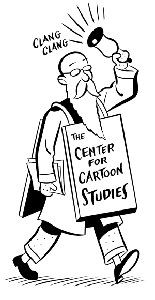 What’s it like to spend every day drawing comics in the company of and under the tutelage of other comics pros? Last November my fiancé
What’s it like to spend every day drawing comics in the company of and under the tutelage of other comics pros? Last November my fiancé 
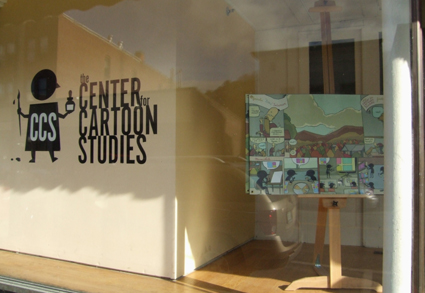
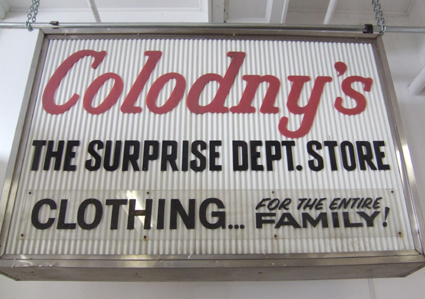
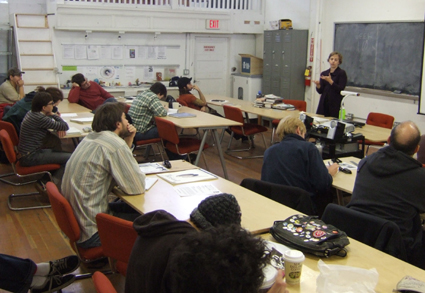
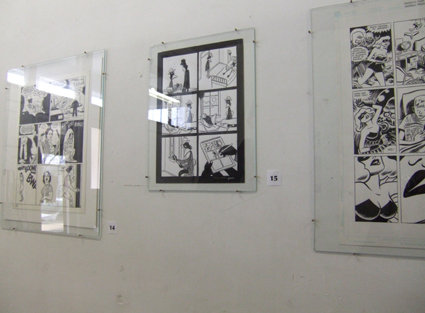

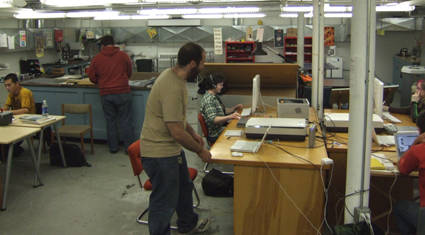
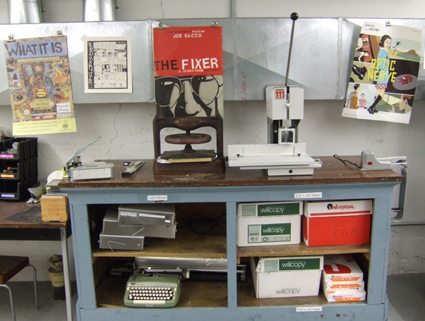

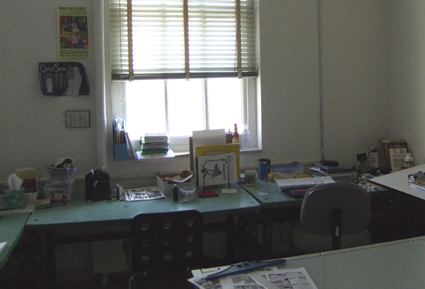

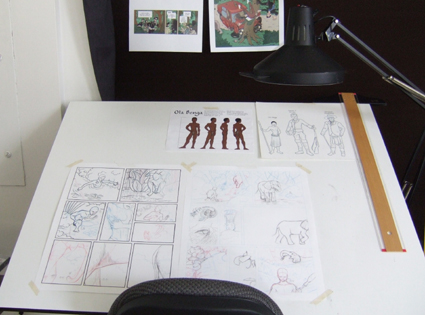
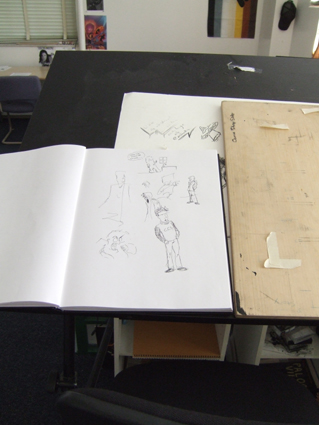
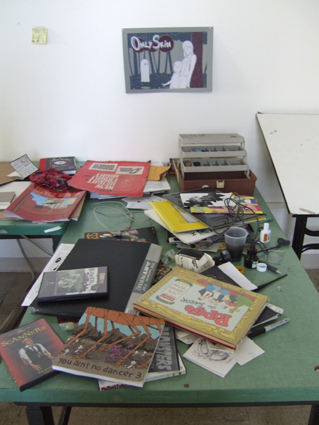

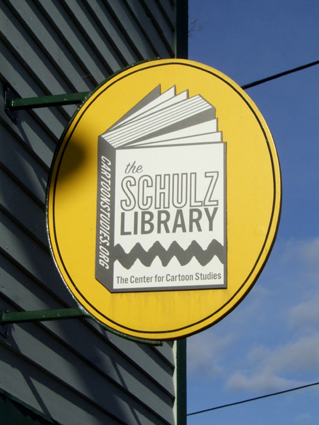

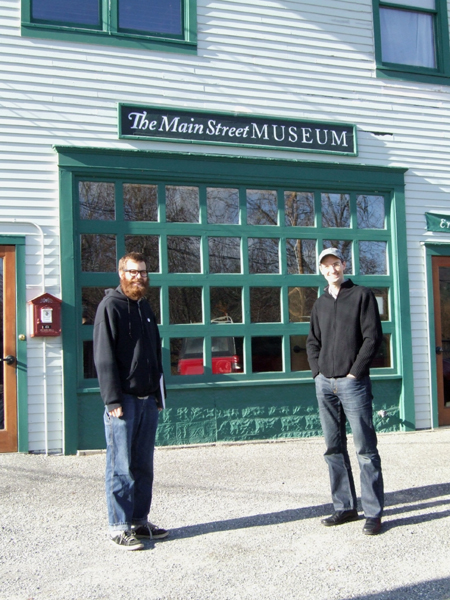
 One of my favorite books to come out this season is
One of my favorite books to come out this season is